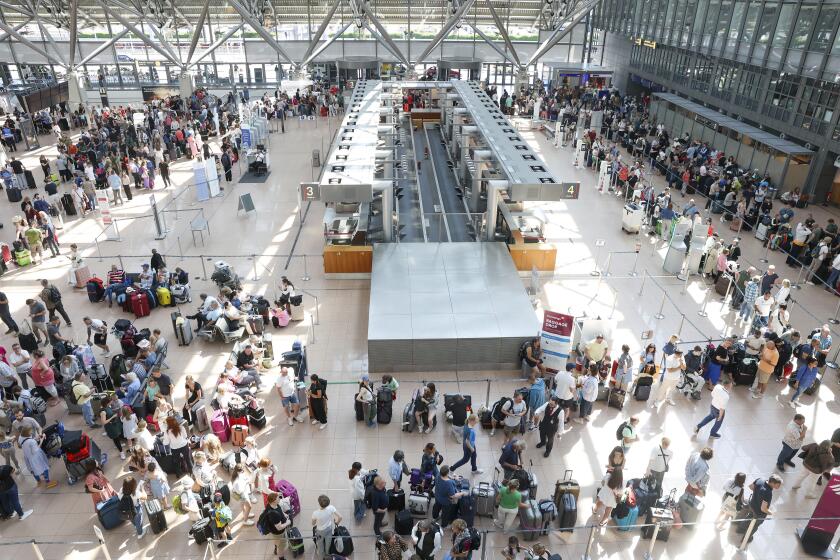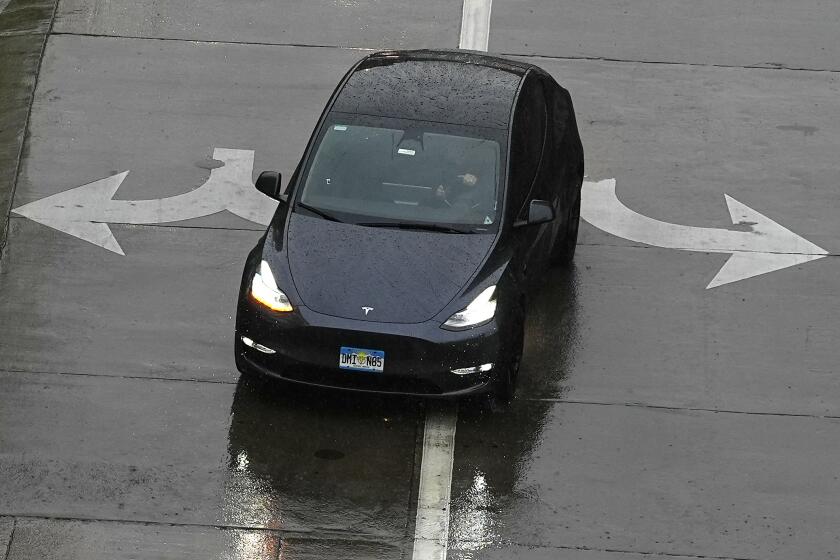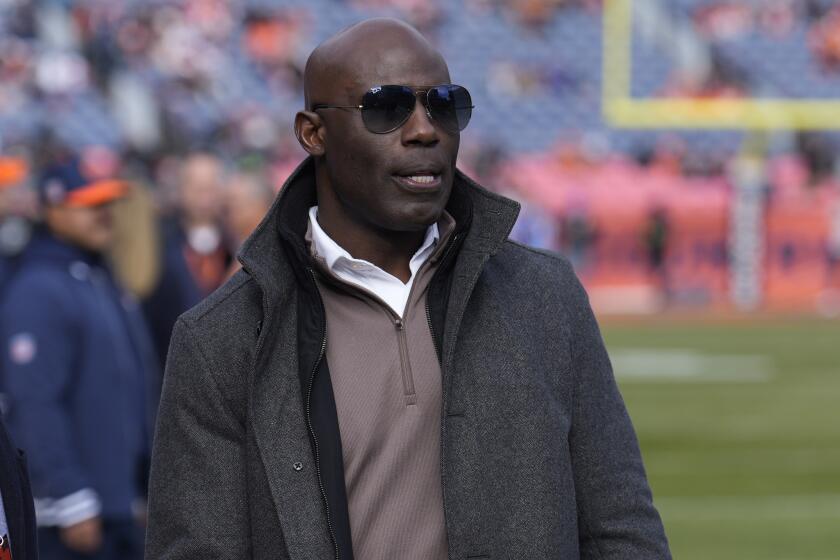Suspension Proposed for Pilot Who Nearly Landed Jet at Wrong Airport
Federal Aviation Administration investigators have recommended a 45-day license suspension for the Continental Airlines pilot who nearly landed a DC-9 jetliner on a small San Fernando Valley airstrip in December after mistaking it for nearby Burbank Airport.
The pilot, identified for the first time Monday as Paul Charles Haynie of Long Beach, has told the FAA that he intends to ask for a hearing to contest multiple charges of careless flying in connection with the incident at Whiteman Airport in Pacoima, FAA spokesman Russell Park said. If he is turned down at the FAA hearing, Haynie can appeal to the National Transportation Safety Board, Park said.
In a March 13 notice of proposed action released on Monday, FAA Regional Counsel DeWitte T. Lawson Jr. informed Haynie that he had been found in violation of FAA regulations by operating an aircraft so carelessly as to endanger life and property, deviating from an air traffic control clearance, flying too low over a congested area and failing to exercise “the degree of care, judgment and responsibility” required of a commercial airline pilot.
Reached by The Times at his Long Beach home, Haynie declined comment, except to say that the FAA letter was “full of errors.”
A spokesman for Continental said the airline remains confident in Haynie, who, he said, has more than 24,000 hours of flying experience.
“At this point there is no conclusive finding, only a proposal that is subject to change based on information provided by the pilot in the process,” said spokesman David Messing. “Our guy is still flying, and there is no reason to think he won’t be in the future. . . . “
The FAA notice said that Haynie, piloting Flight 475 from Denver on Dec. 12, brought the DC-9 to within 400 to 600 feet of touchdown at Whiteman while on approach to Burbank-Glendale-Pasadena Airport, about five miles to the south.
The report said that as Haynie’s plane left the Edwards Approach Control Center in the Antelope Valley, the Burbank tower instructed him to prepare for an instrument approach.
But Haynie, it said, requested visual approach and reported the airport in sight.
Haynie’s descent path caused a minimum-safe altitude warning system to alert at 6:45 p.m., when he was still nine miles northwest of Burbank, the report said. When told of this, the report said, Haynie “advised that he had the terrain in sight,” then, two minutes later, asked the Burbank tower to “turn the runway lights up.”
The tower then advised Haynie that Burbank was “10 ‘clock, six miles,” and Whiteman “1 o’clock, one mile,” and Haynie acknowledged, the report said. A minute later, the report continued, Haynie asked if he was lined up at the right runway and was told he was lined up at Whiteman.
Used mostly by privately owned, single-engine propeller planes, Whiteman has no control tower and is the only airport in the Valley where pilots land and take off by visual reference alone.
More to Read
Sign up for Essential California
The most important California stories and recommendations in your inbox every morning.
You may occasionally receive promotional content from the Los Angeles Times.







